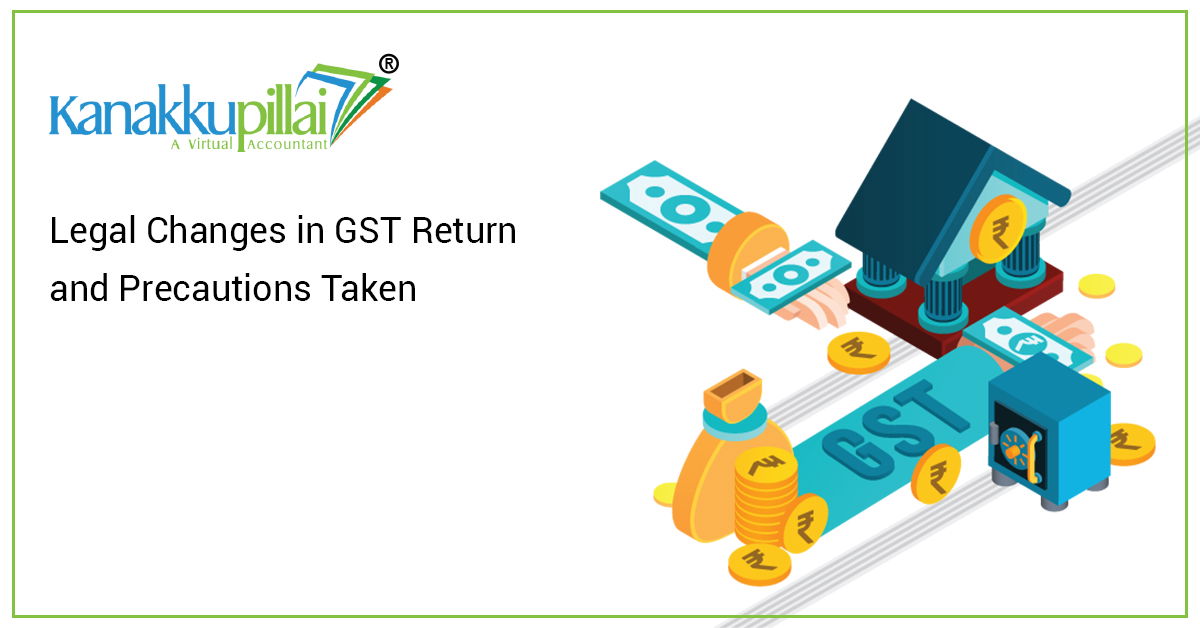From 1st January 2022, several proposed amendments will significantly impact all taxpayers. Two crucial changes are related to the legal modifications for availing of the Input Tax Credit (ITC) and filing GSTR-1 and GSTR-3B. These changes have been notified through Notification No 39/2021-Central Tax, dated 21st December 2021. This article aims to delve into these two amendments and guide taxpayers in preparing for the upcoming GST return filing for December 2021.
Changes In Case of Availing ITC from 1st of January 2022
It’s worth noting that the Supreme Court recently answered the following key questions in the matter of UNION OF INDIA Vs BHARTI AIRTEL LTD & ORS:
- According to the requirements of the CGST Act 2017, a taxpayer can claim an ITC on the booked books and records (Section 16)
- RTP is required to conduct an ITC self-assessment under Section 59.
- RTP calculates its eligibility for ITC and production tax liabilities, including any cash or credit ledger balance, principally using its office records and books of accounts.
- The everyday portal is merely a conduit for feeding or retrieving such data; it is not required to be the primary source for self-assessment.
- Inserted by the Finance Act of 2021, dated March 28, 2021, with effect from January 1, 2022, as amended by Notification No 39/2021-Central Tax, dated December 21, 2021.
With effect from January 1, 2022, the above-mentioned judgement has been overturned because Section 16 of the CGST Act has been changed to include Clause 16(2) (aa), which adds a fifth criterion to claiming ITC:
(2) Notwithstanding or considering anything that is provided in this particular section, no registered person or taxpayer shall be entitled to an input tax credit in respect of any supply of goods or services or both to him until {(aa) the description and data of the debit note or invoice referred to in clause (a) have been provided by the supplier in the record of outward sales or supplies made, and such details have been communicated to the recipient of such invoice or debit note in the manner that is prescribed under section 37.}
As a result of the foregoing, it may be determined that the entire GST period will be separated into two halves to claim ITC via GSTR-2A:
- From July 1, 2017, to December 31, 2021 – The ITC may be based on the purchase register.
- Beginning January 1, 2022, ITC can only be claimed using GSTR 2A.
The following are further implications of the revisions for taxpayers:
- Beginning January 1, 2022, five conditions must be met to claim ITC –
- The tax invoice/Debit Note must be in the recipient’s possession.
- The goods/services must have been delivered to the recipient.
- The tax levied must be paid to the government.
- The recipient must submit a GSTR 3B form.
- The provider must file a GSTR-1 and inform the recipient of the facts via GSTR 2A.
- Rule 36(4) states that an excess of 5% may be claimed over and above the value of GST recorded in GSTR 2A/2B, which will be changed and no longer applicable.
(4) A registered person’s input tax credit for invoices or debit notes for which the details have not been provided by the seller or the supplier under section 37(1) in FORM GSTR-1 or using the invoice providing facility shall not exceed 5% of the eligible credit available in respect of invoices or debit notes for which the details have been provided by the sellers or the dealers under sub-section (1) of section 37 in FORM GSTR-1 or using the invoice furnishing facility.
Because the amendment is retroactive, taxpayers will only be eligible to claim the amount of ITC available in GSTR 2A starting in January 2022, i.e., when submitting GSTR 3B for December 2021.
The CGST Rules 2017, Explanation to Rule 69, has provided and given GSTR 2A as the return for matching ITC between suppliers and recipients:
The following is the explanation of Rule 69:
Explanation:
For the purpose and reason of this rule, it would be provided hereby that:
(i) ITC or Input tax credit claims in respect of invoices and debit notes in FORM GSTR-2 that the recipient accepted based on FORM GSTR-2A without the amendment or change shall be treated as matched if the supplier corresponding has provided or filed a valid return;
(ii) ITC or Input tax credit claims regarding debit notes and the bills or invoices in FORM GSTR-2 that the recipient accepted based on FORM GSTR-2A.
- If there is a discrepancy between GSTR2A and GSTR 2B, e.g., if suppliers file their GSTR1 late but still claim the ITC under Rule 69, the ITC may be claimed using GSTR 2A.
- Remembering Section 42(3), which requires the government to match input tax credits, is crucial. Although legal action against the recipient cannot be initiated immediately, the deficiency should be disclosed to “both” the supplier and the recipient. The following is what section 42(3) says:
Sec 42(3), where a recipient’s input tax credit for an inward supply exceeds the tax declared by the supplier for the same collection, or the outward supply is not stated by the supplier in his valid returns, the disparity must be communicated to both parties in the manner required.
vii. At the end of the year, i.e., when submitting the return for September 2022, the ITC for the previous year, 2020-21, will be limited to the GSTR 2A Balance.
viii. What happens once the recipients file GSTR 3B for September 2022, and the suppliers file their returns or change their invoices? In this regard, our legal opinion is that if the suppliers submit GSTR 1 and it is reflected in the recipients’ GSTR2A, then ITC should be available.
- The Hon’ble Calcutta High Court held in the case of M/s LGW INDUSTRIES LIMITED & ORS. that taxpayers have a legal obligation to check the identification of their suppliers. The following is the wording –
Also, assess whether the petitioners have met their legal obligation to verify the suppliers’ identities (RTP).
As a result, we recommend that recipients establish procedures to demonstrate that steps have been made to ensure that suppliers can be identified.
Amendments to Form GSTR-1
The following explanation has been added to Section 75(12):
The General terms and provisions of Section 75 relating to tax determination say that:
(12) Where any amount of self-assessed tax by a return provided under section 39 remains due and unpaid, either on a whole or partial basis or any amount of interest payable on such tax remains due and unpaid, the same shall be recovered under the provisions of section 79, notwithstanding anything contained in sections 73 or 74.
Explanation:
The term “self-assessed tax” includes the tax payable on details of outward supplies supplied under section 37 but not included in the return furnished under section 39 for the purposes of this subsection.
The proper officer shall proceed to recover any tax payable without issuing a Show Cause Notice by deducting from refunds, holding and selling goods or immovable property, and collecting from debtors, according to Section 79 on tax recovery.
The measures to be taken from January 2022 are as follows:
- File GSTR 1 to calculate the actual tax liability based on GSTR-1. Any discrepancy between GSTR-1 and GSTR-3B may result in recovery proceedings under Section 79 of the CGST Act without the issue of an SCN.
- Uploading Credit Notes should be done with caution. There may be a variation between GSTR-1 and GSTR-3B if a CN is not uploaded in the GSTR-1. This could result in recovery proceedings under Section 79 of the CGST Act without needing an SCN.
iii. In a significant discrepancy between GSTR 1 and GSTR 3B, one may offer evidence to the Jurisdictional Officer regarding the causes for the difference to avoid recovery actions.
- Another alternative is to pay the extra tax this month and modify it in the following month’s GSTR 3B to avoid any recovery proceedings.
Significant Changes in GST Law
Starting from January 1st, 2022, the GST regime will witness a range of tax rate adjustments and procedural modifications. Here are some of the important changes that will be implemented:
- Liability of e-commerce operators: E-commerce operators will be liable to pay tax on services such as passenger transport or restaurant services provided through their platforms.
- Correction in inverted duty structure: There will be a correction in the inverted duty structure for the footwear and textile sectors. All footwear, regardless of price, will attract a GST rate of 12%.
- Exemption for offline/manual mode: Passenger transport services provided by auto-rickshaw drivers offline or in manual mode will continue to be exempt from GST.
- Compliance for food delivery platforms: Food delivery platforms will now be responsible for the deposit and invoice-raising compliance.
- Anti-evasion measures: Several anti-evasion measures will be implemented from January 2022, including mandatory Aadhaar authentication for claiming GST refunds and blocking the facility of GSTR-1 filing if a business fails to file GSTR-3B for the preceding two months.
- Enhanced recovery powers: The GST Law has been amended to grant GST officers the authority to visit premises and recover tax dues without a prior show-cause notice.
2022 Updates in GST
December 1st, 2022
The 48th GST Council meeting is scheduled for Saturday, December 17th, 2022, with a diverse agenda containing several important items.
November 10th, 2022
- Circular 181 has been issued to clarify that refund-related amendments will be applied prospectively.
- Circular 182 provides the verification procedure for allowing transitional credit claims made by taxpayers from October 1st, 2022, to November 30th, 2022.
September 28th, 2022
- Amendments related to Input Tax Credit (ITC) conditions in the Finance Act of 2022 have been notified.
- The due date for claiming ITC and making amendments to sales/credit-debit notes for a financial year has been extended until November 30th of the following year.
September 1st, 2022
The recent changes in Table 4 concerning reporting ineligible input tax credits have been implemented on the GST portal or government portal.
August 1st, 2022
(a) The e-invoicing system will be extended to businesses with an annual aggregate turnover (AATO) exceeding Rs. 10 crores from October 1st, 2022, as per Central Tax notification no. 17/2022.
(b) Businesses with a turnover of over Rs. 5 crores must now provide a six-digit HSN code in Table 12 of GSTR-1.
July 5th, 2022
The Central Board of Indirect Taxes and Customs (CBIC) has notified six new CGST notifications, including modifying the GSTR-3B format to include a new table for reporting e-commerce sales and related taxes. Section 110 of the Finance Act 2022 has also been notified, enabling taxpayers to transfer CGST from one GSTIN to another. Additionally, the due dates for filing GSTR-4 and CMP-08 have been extended with late fee waivers.
June 29th, 2022
The 47th GST Council meeting occurred on June 28th and 29th, 2022, in Chandigarh. Key recommendations were made regarding revisions in rates for goods and services, trimming down the GST exemption list, and opening up modifications to the GSTR-3B format for public suggestions.
May 26th, 2022
Late fees for the delay in filing GSTR-4 for the financial year 2021-22 have been waived if the filing is done between May 1st and June 30th, 2022, as per CGST Notification No. 7/2022.
February 24th, 2022
- The e-invoicing system will be extended to businesses with an annual aggregate turnover ranging from Rs. 20 crores to Rs. As per notification no; 50 crores, starting April 1st, 2022. 1/2022.
- Composition taxable persons and those interested in opting for the scheme for 2022-23 must submit a declaration through Form CMP-02 on the GST portal by March 31st, 2022.
February 1st, 2022
The Union Budget 2022 introduced significant changes to the GST law. For more information, you can find the highlights of the Budget 2022 [here](insert link).
Please note that the information provided is a summary of the updates, and it’s advisable to refer to official notifications and sources for detailed and up-to-date information regarding these GST updates in 2022.
Related Services





